

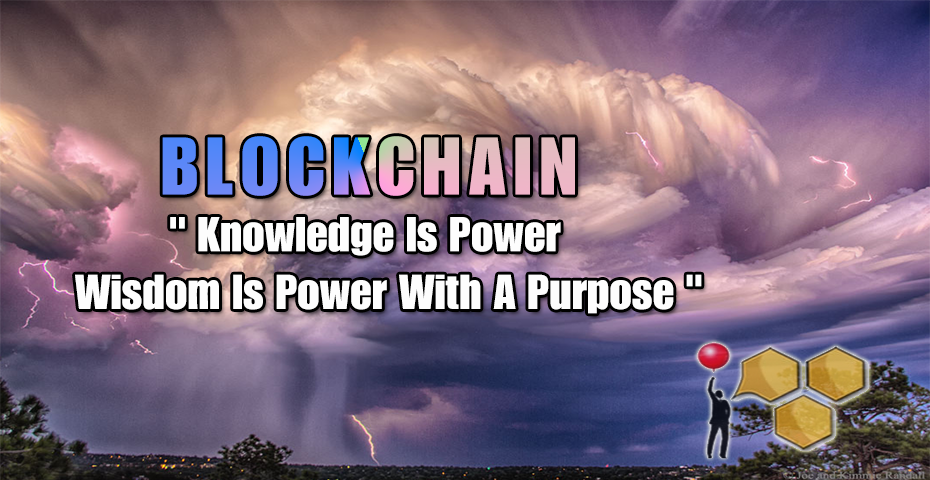
“Quote” accredited to Solitaire Parke
Blockchain is defined as one of the most significant technological advances in modern history, potentially on a par with the internet, which has led to it being dubbed “The Internet 3.0”. Despite the incredible potential of blockchain to reshape the world as we know it, there is still little understanding of what it is, what it does and why it is so revolutionary.
Blockchain was first conceptualized by Stuart Haber and W. Scott Stornetta back in 1991, although they didn’t call it blockchain. They wrote a series of papers and patents. One, in particular, was How To Timestamp a Digital Document, published in 1991, which involved a cryptographically secured chain of blocks. This is what many consider to be the first incarnation of blockchain technology. Basically, they set out to create an immutable ledger.

Stuart Haber and W.Scott Stornetta
As Stornetta stated in an interview,
“It’s unfortunate that so few people actually read all the papers and patents, because there are a few ideas that can be mined from there that some have since reinvented because they never read the papers.”
Nevertheless, Stornetta is humbled by the fact that his 1991 paper about Timestamping ended up inspiring the whole blockchain movement. Interestingly, even after the “blockchain” work they did, the connection between it and money was overlooked. It was not until Satoshi released the Bitcoin whitepaper in 2008 that the connection became a reality and a peer to peer monetary system was created.
There were references made to Haber and Stornetta in Satoshi’s whitepaper, 3 in fact...
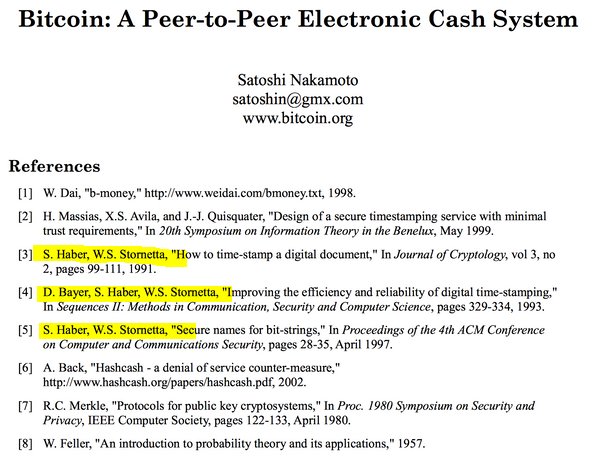
Blockchain technology is not a company or an app, but an entirely new way of documenting data on the internet. The technology can be used for social networks, messengers, games, exchanges, storage platforms, voting systems, prediction markets, online shops and much more. This can be seen as a new internet, which is why some have labeled it “The Internet 3.0”
The information recorded on a blockchain can assume any form, whether it be signifying a transfer of money, ownership, a transaction, someone’s identity, an agreement between two parties, even how much electricity a lightbulb has used. However, to do so would require a confirmation from several devices namely computers on the network.
Once an agreement also acknowledged as a consensus is reached between these devices to store any data on a blockchain, it is unquestionably there. It cannot be disputed, removed or altered without the knowledge and permission of those that made that record as well as the wider community.
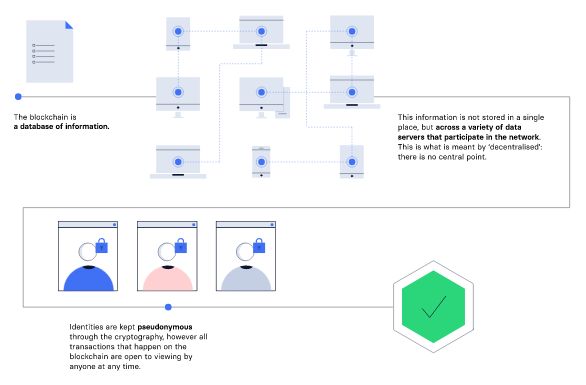
Blockchain owes its name to how it works and the manner in which it stores data, namely that the information is packaged into blocks, which link to form a chain with other blocks of similar information.
It is this act of linking blocks into a chain that makes the information stored on a blockchain so trustworthy. Once the data is recorded in a block it cannot be altered without having to change every block that came after it, making it impossible to do so without it being seen by the other participants on the network.
Distributed ledgers have 4 key attributes:
Essentially, each block contains the data it is recording. For example, a transaction like 1 MHV coin being sent from Tom to Jerry, as well as timestamps of when that information was recorded. It will also include a digital signature linked to the account that made the recording and a unique identifying link, in the form of a hash (think of it as a digital fingerprint), to the previous block in the chain. It is this link that makes it impossible for any of the information to be altered or for a block to be inserted between two existing blocks. In order to do so, all the following blocks would need to be edited too.
As a result, each block strengthens the previous block and the security of the entire blockchain because it means more blocks would need to be changed to tamper with any information. When combined, all of these create unquestionable storage of information, one that cannot be disputed or declared to be untrue. It is important to note to be absolutely sure where you are sending money. On a blockchain, once a transaction is sent it is sealed and cannot be reversed.
Let’s go into more depth about the three main properties of blockchain technology which are;
For decades now we have been subject to and use a centralized entity that stored all our data and we would have to interact solely with this entity to transact or acquire whatever information we required.
A perfect example of a centralized system is the banks. They store all your money, and the only way that you can pay someone is by going through the bank.
When you google search for something, you send a query to the server who then gets back at you with the relevant information. That is called a simple client-server.
We have used centralized systems for many years, thinking all is well, however, they have several vulnerabilities.
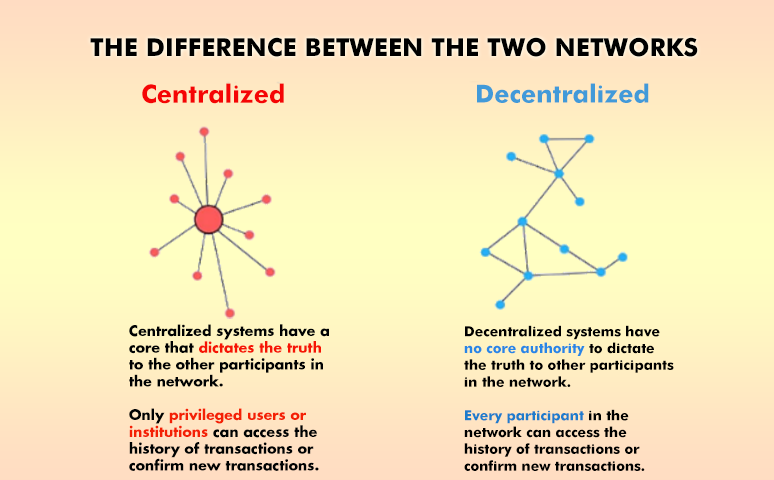
So, what happens if we just take this centralized entity away?
In a decentralized system, the information is not stored by one single entity. In fact, everyone in the network owns the information.
In a decentralized network, if you wanted to interact or send money to someone, then you can do so directly without going through a third party. That was the main ideology behind Bitcoin and also the ideology of Markethive Coin. You and only you alone are in charge of your money. You can send your money to anyone you want without having to go through a bank.
One of the most interesting and misunderstood concepts in blockchain technology is “transparency.” Some people say that blockchain gives you privacy while some say that it is transparent. Sounds contradictory, doesn’t it?
The simple fact is a person’s identity is hidden via complex cryptography and represented only by their public address. So, if you were to look up a person’s transaction history, you will not see “Tom sent 1 MHV” instead you will see “1MF1bhsFLkBzzz9vpFYEmvwT2TbyCt7NZJ sent 1 MHV”. This makes the person’s real identity secure and private while still being able to see all transactions that were done via their public address - transparency.

This image shows what the blocks and transaction details of each public address on Blockchain Explorer
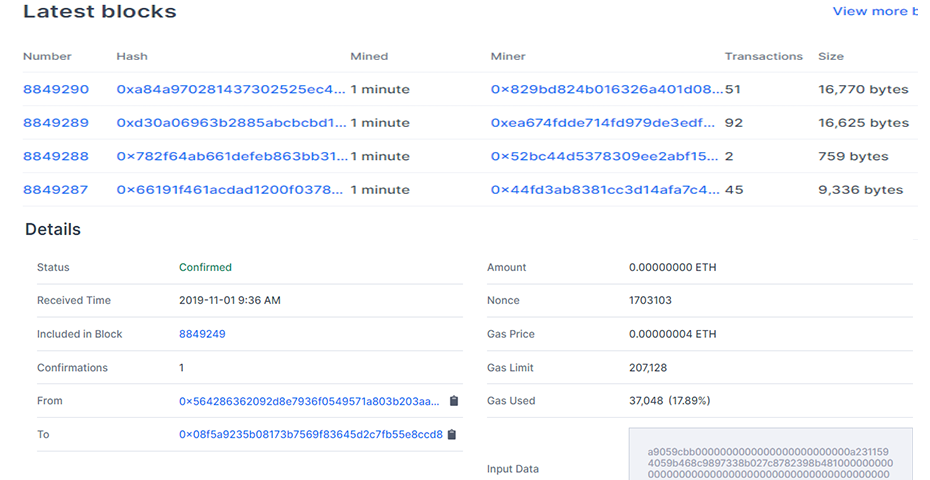
This level of transparency has never existed before within a financial system. It adds that extra, and much needed, level of accountability which is required by some of these biggest institutions.
Speaking purely from the cryptocurrency perspective, if you know the public address of one of these big companies, you can simply pop it in a blockchain explorer and look at all the transactions that they have engaged in. This forces them to be honest, something that they have never had to deal with before.
That’s of course if these companies integrate the blockchain. You can see why something like this can be very helpful for the finance industry right?
Immutability, in the context of the blockchain, means that once something has been entered into the blockchain, it cannot be tampered with. Imagine how valuable this will be for financial institutes!
Imagine how many embezzlement cases can be nipped in the bud if people know that they can’t “work the books” and fiddle around with company accounts.
The reason why the blockchain gets this property is that of the cryptographic hash function. In simple terms, hashing means taking an input string of any length and giving out an output of a fixed length. In the context of cryptocurrencies like bitcoin, the transactions are taken as input and run through a hashing algorithm (Bitcoin uses SHA-256) which gives an output of a fixed length.
Let’s see how the hashing process works. We are going to put in certain inputs. For this exercise, we are going to use the SHA-256 (Secure Hashing Algorithm 256).

As you can see in the above image, in the case of SHA-256, no matter how big or small your input is, the output will always have a fixed 256-bits length. This becomes critical when you are dealing with a huge amount of data and transactions. So basically, instead of remembering the input data which could be huge, you can just remember the hash and keep track.
These hash functions make it ideal for cryptography. There are certain properties that a cryptographic hash function needs to have in order to be considered secure, however, there is just one property that we’ll focus on today. It is called the “Avalanche Effect.”
What this means is even if you make a small change in your input, the changes that will be reflected in the hash will be huge. Notice the change in the hash in the image below? Just because one letter was changed from a capital letter in the input hash, to lower case, it drastically affected the output hash.

The blockchain is a linked list that contains data and a hash pointer that points to its previous block, hence creating the chain. What is a hash pointer? A hash pointer is similar to a pointer, but instead of just containing the address of the previous block it also contains the hash of the data inside the previous block.
This one small tweak is what makes blockchains so amazingly reliable and trailblazing.
Imagine this for a second, a hacker attacks block 3 and tries to change the data. Because of the properties of hash functions, a slight change in data will change the hash drastically. This means that any slight changes made in block 3, will change the hash which is stored in block 2, now that in turn will change the data and the hash of block 2 which will result in changes in block 1 and so on and so forth. This will completely change the chain, which is impossible. This is exactly how blockchains attain immutability.
With any disruptive idea, like the Internet was back in the day, not every company will benefit or embrace this new technology immediately. Banks are clearly in the path of the disruption of the blockchain, the Big Data social network systems, the online auction, and shopping centers are as well. And companies that resist blockchain will be left behind in the Internet 3.0.
Forward-looking companies that convert to the blockchain to improve the privacy and security of their data and create an environment that is unfettered from political and nefarious agendas, will be the winners on top.
Just about every company that migrates to the blockchain and new companies launch built upon the blockchain, will prosper, as long as they deliver and make their prime agenda to benefit their customers.
In the next article, we’ll see what companies have already adopted blockchain technology including Social Media and Market Networks and how it proves to benefit the user.
References: Lisk, Blockgeeks

Deb Williams
A Crypto/Blockchain enthusiast and a strong advocate for technology, progress, and freedom of speech. I embrace "change" with a passion and my purpose in life is to help people understand, accept and move forward with enthusiasm to achieve their goals.
To join Markethive click on the image below it's FREE to join:
